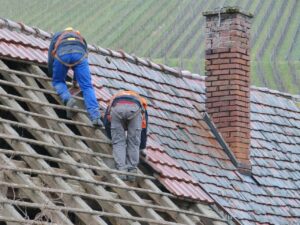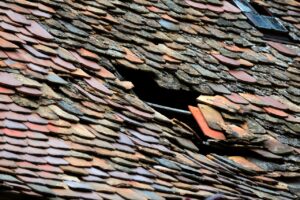A Guide To Roof Repair For Mobile Homes
Are you a mobile home owner in need of roof repair? Don't fret! This comprehensive guide will walk you through the process step by step. Whether you're dealing with small leaks or major damage, we've got you covered.
By following our expert advice, you'll be able to assess the roof damage, gather the necessary tools and materials, and fix those pesky leaks in no time. We'll even address major roof damage and provide you with regular maintenance tips to ensure long-term roof health.
With our easy-to-follow instructions and handy tips, you'll be able to tackle any roof repair project with confidence. Say goodbye to those sleepless nights worrying about your mobile home's roof and say hello to a sturdy and leak-free roof that will stand the test of time.
Let's get started on your roof repair journey!
Assessing the Roof Damage
Now let's take a look at how to assess the damage on your mobile home's roof! The first step is to conduct a thorough inspection of the roof.
Grab a ladder and climb up to get a closer look. Check for any visible signs of damage, such as missing or cracked shingles, sagging areas, or loose roofing material. Don't forget to examine the edges and corners as well.
Once you've assessed the exterior, head inside and inspect the ceiling for any water stains or signs of leakage. It's also important to check the attic for any signs of water damage or mold growth.
Take note of all the issues you find, as this will help you determine the extent of the damage and what repairs are necessary.
Gathering the Necessary Tools and Materials
To efficiently complete the task at hand, make sure you have all the essential tools and materials prepared. Before you start gathering the necessary items, make sure you have a ladder that's tall enough to reach your roof safely.
You'll also need a hammer, roofing nails, a pry bar, a utility knife, and a measuring tape. Additionally, gather roofing cement, a wire brush, a caulking gun, and a paintbrush for applying sealant. Don't forget to have a bucket or a tarp to collect any debris or water that may fall during the repair process.
Lastly, have a safety harness or ropes to secure yourself while working on the roof. Having all these tools and materials ready will make your roof repair job much smoother and more efficient.
Steps for Repairing Small Leaks
First, gather all the necessary tools and materials for fixing those pesky small leaks in your roof.
Start by locating the source of the leak and mark it with a pencil or chalk.
Next, clean the area around the leak using a brush or cloth to remove any debris or dirt.
Once the area is clean, apply a generous amount of roof sealant directly onto the leak.
Use a putty knife or your finger to spread the sealant evenly and ensure it covers the entire area.
Allow the sealant to dry completely, following the manufacturer's instructions.
Finally, inspect the repaired area to ensure there are no visible leaks or gaps.
If necessary, apply an additional layer of sealant for added protection.
Addressing Major Roof Damage
Once you've identified major damage to your roof, it's crucial to take immediate action to prevent further deterioration and potential structural issues.
Start by assessing the extent of the damage. Look for missing or severely damaged shingles, sagging areas, or large holes.
If the damage is limited to a small area, you can try patching it up with roofing cement or a patch kit specifically designed for mobile homes. However, if the damage is extensive, it's best to call in a professional. They have the expertise and equipment to handle major roof repairs.
Remember, addressing major roof damage promptly is essential to ensure the safety and longevity of your mobile home. Don't delay in seeking professional help to avoid costly repairs down the line.
Regular Maintenance Tips for Long-Term Roof Health
Ensure the longevity of your roof by regularly maintaining its health, so you can bask in the peace of mind that comes with a sturdy and reliable shelter.
Start by inspecting your roof at least twice a year, in the spring and fall, to catch any potential issues early. Look for loose or damaged shingles, sagging areas, and signs of leaks.

Trim any overhanging branches to prevent them from scratching the roof's surface or causing damage during storms.
Keep your gutters clean and free from debris to ensure proper water drainage.
Check the seals around vents, chimneys, and skylights for any cracks or gaps.
Lastly, make sure to remove any moss or algae growth, as they can damage the roof over time.
By following these maintenance tips, you can extend the lifespan of your mobile home's roof and avoid costly repairs in the future.
Conclusion
In conclusion, taking care of your mobile home's roof is crucial for its longevity and your comfort. By regularly assessing the damage, gathering the necessary tools and materials, and addressing both small leaks and major damage, you can ensure a well-maintained roof.
Additionally, implementing regular maintenance tips will contribute to the long-term health of your roof. Remember to stay proactive and address any issues promptly to avoid further damage. With the right care, your mobile home's roof will provide you with protection and peace of mind for years to come.

